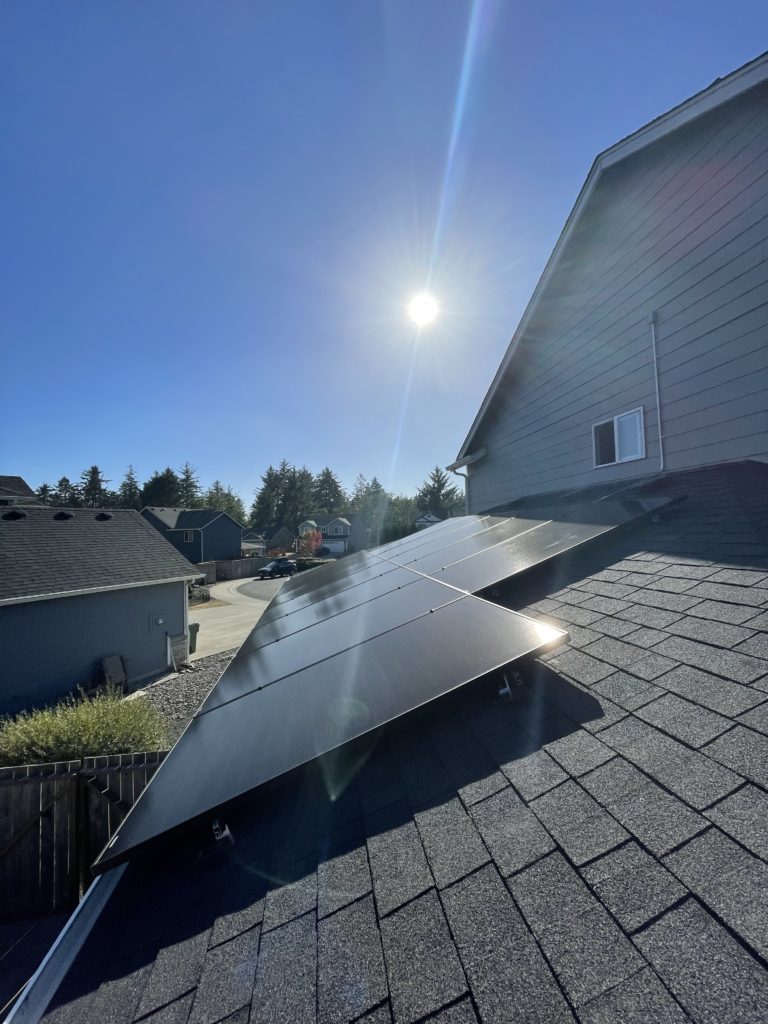Why the price tag doesn’t tell the full cost of what you pay…
Why doesn’t the price tag of an item actually reflect how much something costs to you? Sometimes we ignore or discount other impacts of creating that item. Often items are subsidized to be cheaper but make other parts of your life more expensive. Therefore, prices do not reflect all of the social costs. One common example is a factory along a river. If it pollutes the river, someone downstream trying to operate an inner-tubing business will be affected. Pollution negatively impacts the health of people downstream and limits business opportunities for others. These social costs become our added costs of the product the factory is making. Those unaccounted costs are called externalities.

Externalities
Externalities, often called negative externalities, is an important concept in economics and the environment. The Oxford Languages definition of an externality is, “a side effect or consequence of an industrial or commercial activity that affects other parties without this being reflected in the cost of the goods or services involved”. The biggest example might be automobiles. PNAS.org estimated that the social cost of on-road emissions in 2017 was $260 billion.
Apply this to the factory polluting in the river. As it pays the clean-up costs of polluting, its product will become more expensive to reflect that. The business might also invest in systems to avoid pollution completely. This also increases the product cost. These extra costs reflect the truth of transactions in the world.
Think about the companies that produce cars, gas, and everything contributing to harmful emissions. These businesses aren’t directly paying the costs to clean the air. If they were, it would be reflected in their prices when you buy gas or a vehicle. Society does frequently pay these costs through taxes, health care, productivity loss, and so on. Other business opportunities that rely on the quality of a shared resource or public space, like air, to make good earnings are stifled or diminished. There is lost opportunity cost for better and more businesses.
This means that you are indirectly paying the clean-up costs for companies that produce goods and services with serious negative effects to the environment. This is necessary for certain goods to be sold so cheaply. Many items are created in mass with no responsibility for their true costs to people and the environment. There are many negative externalities from a polluting product. Fossil fuel consumption leads to biodiversity loss, lung cancers, acid rain, ocean acidification, building deterioration and many other social costs.
Lucky Us
Luckily, scientists and economists have lots of data to work with and can let us know the true costs of things in our lives. They do this by calculating the particular emission of an activity, its dispersion into the environment, and its impact. A comprehensive report from Environmental Science and Pollution Research describes this process as a “transformation of physical effects into monetary value of external costs (e.g., cost of health loss).” Two important industries that have many of these negative externalities are the energy sector and fossil fuels. As we increase the amount of energy we are using, unaddressed externalities will compound in costs.

Energy Externalities
One very costly sector is energy production. This is because we still rely on (and don’t account for) the many costs from using fossil fuels as energy. In 2015, the International Monetary Fund calculated the full price of environmental damages caused by fossil fuels. They found that by not accounting for these damages, nations are collectively discounting $5.3 trillion each year. An IRENA brief estimates that increasing use of renewable energy by 2030 could save up to $4.2 trillion per year worldwide. This is 15 times higher than the associated costs of doubling the share of renewables.
Areas in the U.S. with coal have very high negative externalities from air pollution. Places with more hydroelectricity have very cheap power, which would seem to suggest they have low externalities associated with energy production. However, the costs from impacts hydroelectric dams have made on river systems are significant. Reservoirs behind dams contribute to water loss through evaporation and harm salmon populations. These environmental costs warrant change.
Sustainable Solutions
At this point we should turn to the energy option that has the least amount of negative externalities, the highest net benefit and lowest net cost. Solar power is not without its problems and negative externalities of its own. However, weighing its societal benefits against costs and comparing that to other energy production will reveal that it is one of our best options. Investing in solar power will cut total costs for individuals and communities. Some decisions and actions will have positive externalities, which are unintended but beneficial.
Currently, solar requires mining resources and minerals, some of which are toxic. Two concerns of solar energy continue to be improved upon: recycling and longevity. There have been major advancements in technology that extend lifetime and recycle more of the metals from solar panels.
Statistically, solar is a more reliable energy source and does not emit carbon in its electrical production. That means when you pay for the technology, it will be more of an accurate reflection of the costs to you and the planet. You won’t be paying for the environmental clean-up costs and health effects associated with fossil fuels.
The World Resource Institute lists a study that finds the total net benefit of renewables is higher than fossil fuel energy production. They share estimates that show renewable energy sources typically emit about 50g or less of CO2 emissions per kWh over their lifetime. This is compared to about 1000 g CO2/kWh for coal and 475 g CO2/kWh for natural gas. Most of the emissions from fossil fuel generators occur from fuel combustion, in addition to raw materials extraction, construction, fuel processing, plant operation and decommissioning of facilities.

Get A Solar Consultation
Sustainable Solutions Advisors helps tackle the energy sector’s externality issues by providing free solar consultations and finding the best cost to value solar systems for homeowners. Click here to set up a free consultation and one of us will assess energy usage in your home and the viability of solar for your roof or property.
